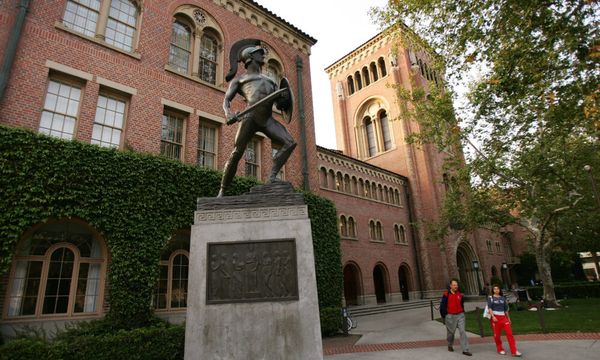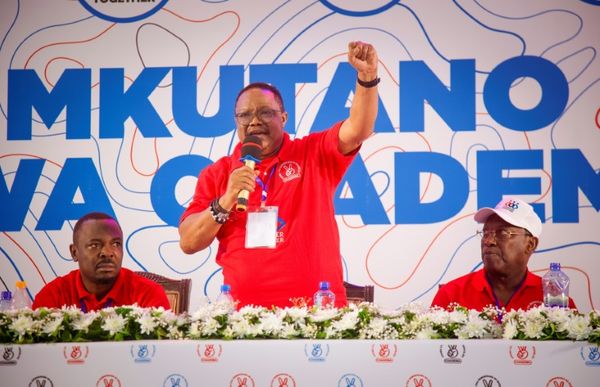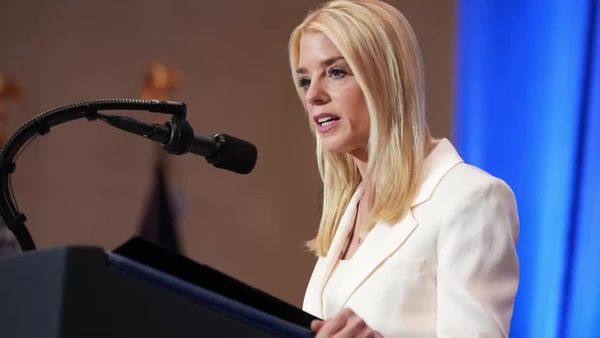
“I’m lost for words, I don’t know what to say,” stuttered five-time Grand Prix winner John Watson in commentary for Eurosport, watching Alex Caffi’s damaged Dallara being craned away. “I cannot believe what [Andrea] de Cesaris has done. It’s criminal.”
The famous altercation between the Scuderia Italia team-mates at the 1989 US Grand Prix in Phoenix, when de Cesaris was several laps down and turned in on his younger compatriot, is as blatant a violation of motor racing’s golden rule as they come.
Caffi had run second prior to pitting for fresh tyres on his Dallara 189. He rejoined in fifth and would have at least finished in the fourth place eventually occupied by Christian Danner's Rial had it not been for that fateful clash with de Cesaris. But such was the Pirelli-shod car’s strength on tight and twisty circuits that Caffi was presented with several opportunities to shine in his breakout F1 season.
Given he now owns chassis 005 with which he took sixth in Montreal, and achieved his best F1 finish with fourth in Monaco that season too, it’s hardly a surprise he picks it as his favourite car. “It's my iconic car, the best car of my life,” he says.
Caffi believes the 189 “was born good” so it hardly mattered that Scuderia Italia’s owner, the steel magnate Giuseppe Lucchini, couldn’t offer a development budget to match its better-established works-backed rivals. It was the eighth fastest car of 20 by a metric of supertimes in 1989, ahead of Tyrrell, Lotus, Arrows, Larrousse in the midpack.
“We finished more or less with the same car,” remembers Caffi, who had joined the team from Osella for its 1988 debut season as a one-car operation, initially with a modified Formula 3000 chassis as its Sergio Rinland-penned 188 was not ready in time. “We made some work on the ice scoop, but we don't have enough money to make developments like other ones did.”

Although he began the year in pre-qualifying, Caffi made the top 10 on the grid at Imola, Monaco, Phoenix, Montreal (bumping Martin Brundle’s Brabham out in the dying seconds of pre-qualifying), Hungary, Estoril and Adelaide. What all of these had in common was slow-speed corners and a requirement for good traction, a quality Caffi says the 189 possessed in spades.
“It maybe wasn't so fast in the fast corners,” he concedes, “but in the slow tracks the car has lot of traction.”
Arguably an even greater satisfaction for Caffi than his efforts in the Principality, which stands as his best result from 56 starts, was his qualifying display on a Hungarian Grand Prix weekend that didn’t yield any points. Caffi finished seventh after needing a tyre stop, which Nelson Piquet’s sixth-placed Lotus did not.
"In that occasion, I have a chance to show my ability. It was a great result for us because it was a small team compared to the others"
Alex Caffi
But a Dallara never started higher than the third place he annexed in Budapest (although de Cesaris did match it the following year in Phoenix). And Caffi’s heroics, having been second to eventual poleman Riccardo Patrese (Williams) on Friday, forced Ayrton Senna to raise the bar.
McLaren’s 1988 world champion started on the front row of every grand prix in 1989, becoming the first driver to do so since the 1950s – a feat later matched by his great rival Alain Prost (1993) and Damon Hill (1996). But Senna had to dig deep to keep that streak going in Hungary, where Caffi had at his disposal a qualifying special engine.
This, he believes, helped to elevate a car that was often hindered by its regular Heini Mader-tuned Cosworth DFR, which was some way off the latest-spec Ford HB used by Benetton from Paul Ricard onwards. Caffi only had only one qualifying-spec DFR to spend during the season, but has no doubt Hungary was the correct place to deploy it.
“It was really a good car, unfortunately we didn't have a proper engine,” considers Caffi. “It was not really so powerful, so we pay a lot of horsepower against the others, especially against the fastest cars like Ferrari, like McLaren-Honda and Williams-Renault.

“Hungary was and is a track that is quite similar to street circuit; it's a lot of slow corners, big acceleration, so you need to have a lot of traction. Mader made for us a special engine much more powerful for that qualifying; it didn't run for a lot of kilometres, and in that occasion, I have a chance to show my ability. It was a great result for us because it was a small team compared to the others.
“The package was perfect in that weekend. We had the right car with the right tyre – Pirelli did a fantastic job especially for the qualifying [tyres] – in the right place. It was spectacular for us.”
Inspired by this performance, Caffi recalls that Pirelli technicians introduced an even softer configuration of tyre for Saturday in a bid to secure pole. But it proved a step too far.
“I couldn't make one lap, it was too soft,” he explains. “I was faster than my lap time but then I lost a second because the tyre was off. I finished third because Ayrton made a couple of tenths better than me, but it's OK. It was not a bad result!”
Caffi joined Arrows for 1990, but his F1 career fizzled out after suffering a broken jaw in a road accident during a tough 1991 campaign blighted by uncompetitive Porsche engines. His brief dalliance with Andrea Moda in 1992 preceded a switch to sportscars, and today he owns a team in the NASCAR Euro Series.
Caffi agreed a deal to buy his old chassis from Lucchini in 2021 “after one year to try to convince him” and it is currently “in the hands of my old mechanics” for restoration, with a Cosworth DFR now installed. Work is under way on the electrics and efforts are ongoing to source spare parts.
Caffi makes it clear he won’t be treating the car as an ornament. He hopes to invite Giampaolo Dallara to a test day at Varano and ultimately to race it in Monaco’s Historic Grand Prix when the car becomes eligible, which “will be like a circle that comes to the end”.
“I hope we will be finished within this year,” he enthuses. “I want to use the car, it's not part of the furniture. It is the dream for me that I can have it in my garage now.”








